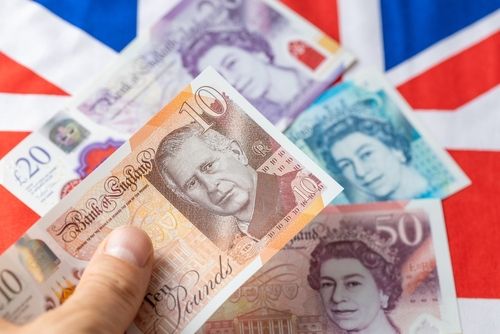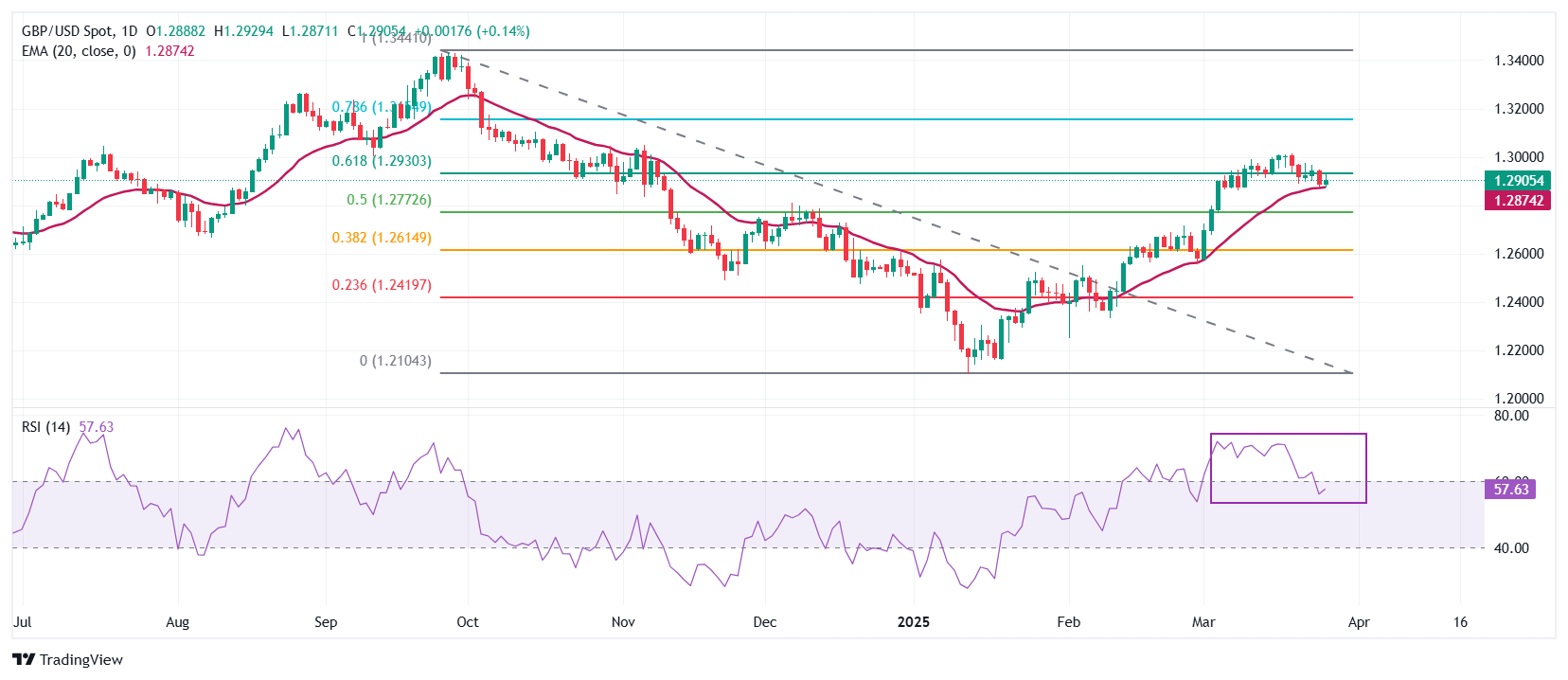Pound Sterling bounces back against US Dollar despite Trump’s tariffs on automobiles

The Pound Sterling gains to near 1.2925 against the US Dollar, while investors ignore fresh tariffs by US President Trump on auto imports.
Fed Kashkari supports leaving interest rates at their current levels for an extended period.
UK Reeves cuts welfare benefits and remains committed to her fiscal agenda.
The Pound Sterling (GBP) recovers strongly to near 1.2925 against the US Dollar (USD) during European trading hours on Thursday. The GBP/USD pair bounces back after a slight corrective move in the last five trading days from the four-month high of around 1.3000. The Cable rebounds as the US Dollar retraces even though United States (US) President Donald Trump has imposed 25% tariffs on all imports of automobiles and their components.
The US Dollar Index (DXY), which tracks the Greenback’s value against six major currencies, corrects to near 104.30 from a three-week high around 104.70 posted earlier in the day.
Theoretically, fresh tariffs by US President Trump should have dampened investors’ risk appetite, but market participants expect that higher levies will also impact US economic growth significantly. The impact of higher tariffs will be borne by US importers, who will pass them on to consumers. Such a scenario will diminish the purchasing power of households.
On the monetary policy front, Minneapolis Federal Reserve (Fed) Bank President Neel Kashkari has guided that the central bank should keep interest rates in the current range of 4.25%-4.50%. "Policy uncertainty is complicating the Fed's job," Kashkari said at the Detroit Lakes Chamber Economic Summit on Wednesday. Kashkari added that a potential resurgence in inflation due to Trump’s policies would boost the need for higher interest rates, while its consequences on economic growth will support monetary policy easing. Together, those forces are "kind of a wash," Kashkari added.
Going forward, investors will focus on the US Personal Consumption Expenditures Price Index (PCE) data for February, which will be released on Friday. The impact of the inflation data is expected to be limited on the interest rate outlook as the fate of the Fed’s monetary policy is tied to the outcome of Trump’s economic policies.
Daily digest market movers: Pound Sterling rises against its peers
The Pound Sterling trades higher against its major peers on Thursday after recovering most of Wednesday’s losses driven by a softer-than-expected United Kingdom (UK) Consumer Price Index (CPI) data for February and a reduction in welfare benefits announced by Chancellor of the Exchequer Rachel Reeves in the Spring Statement.
The UK CPI report showed that inflationary pressures rose at a slower-than-expected pace due to moderate growth in clothing and footwear prices. The headline and the core CPI grew by 2.8% and 3.5% year-over-year, respectively. The Service inflation, which is closely tracked by Bank of England (BoE) officials, rose steadily by 5%. Cooling inflation bodes poorly for the Pound Sterling as it can drive BoE dovish bets.
As promised, Chancellor Reeves didn’t announce any tax raise, reiterated fiscal rules as non-negotiable, and confirmed a £2.2bn increase in defence spending amid uncertainty surrounding the Ukraine war. Reeves said that she would rebuild a nearly 10 billion-pound fiscal buffer and conveyed that amendments in welfare spending would save £4.8 billion.
Reeves confirmed a significant downward revision in the Gross Domestic Product (GDP)
growth rate for the year and said that the Office for Business Responsibility (OBR) has halved growth forecasts to 1%. However, the fiscal watchdog raised growth forecasts for the next four years.
Going forward, investors will focus on the UK Q4 GDP data and the Retail Sales data for February, which will be published on Friday.
Technical Analysis: Pound Sterling finds support near 20-day EMA

The Pound Sterling rebounds against the US Dollar after finding buying interest near the 20-day Exponential Moving Average (EMA), which trades around 1.2873. The GBP/USD pair attempts to stabilize around the 61.8% Fibonacci retracement, plotted from late-September high to mid-January low, at 1.2930.
The 14-day Relative Strength Index (RSI) cools down to near 60.00 after turning overbought above 70.00. Should a fresh bullish momentum come into action if the RSI resumes the upside journey after holding above 60.00.
Looking down, the 50% Fibonacci retracement at 1.2770 and the 38.2% Fibonacci retracement at 1.2615 will act as key support zones for the pair. On the upside, the October 15 high of 1.3100 will act as a key resistance zone.
* The content presented above, whether from a third party or not, is considered as general advice only. This article should not be construed as containing investment advice, investment recommendations, an offer of or solicitation for any transactions in financial instruments.


